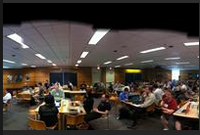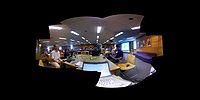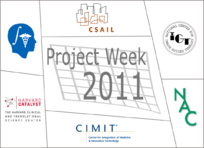Difference between revisions of "2011 Summer Project Week"
(→Agenda) |
(→Projects: Added Iowa huntingtons data sharing project) |
||
| Line 120: | Line 120: | ||
'''Huntington's Disease''' | '''Huntington's Disease''' | ||
| + | #[[2011_Summer_Project_Week_Iowa_Huntington's_disease_data_sharing | Iowa Huntington's Disease Data Sharing]] (Hans Johnson, Mark Scully) | ||
#[[2011_Summer_Project_Week_normal_consistency_particles|Normal consistency in particle correspondence computation using great circles in principal spheres - Huntington's Disease]], (Beatriz Paniagua, Martin Styner, Sungkyu Jung, Mark Scully) | #[[2011_Summer_Project_Week_normal_consistency_particles|Normal consistency in particle correspondence computation using great circles in principal spheres - Huntington's Disease]], (Beatriz Paniagua, Martin Styner, Sungkyu Jung, Mark Scully) | ||
#[[2011_Summer_Project__Week_Shape_Analysis_UNC |SPHARM & particles shape analysis - Huntington's Disease]] (Lucile Bompard, Clement Vachet, Beatriz Paniagua, Martin Styner | #[[2011_Summer_Project__Week_Shape_Analysis_UNC |SPHARM & particles shape analysis - Huntington's Disease]] (Lucile Bompard, Clement Vachet, Beatriz Paniagua, Martin Styner | ||
Revision as of 21:16, 20 June 2011
Home < 2011 Summer Project WeekBack to Events


- Dates: June 20-24, 2011
- Location: MIT (Grier Rooms Location on MIT Campus Map)
Contents
Preliminary Agenda
Agenda
| Time | Monday, June 20 | Tuesday, June 21 | Wednesday, June 22 | Thursday, June 23 | Friday, June 24 |
|---|---|---|---|---|---|
| Project Presentations | NA-MIC Update Day | IGT Day | Reporting Day | ||
| 8:30am | Breakfast | Breakfast | Breakfast | Breakfast | |
| 9am-12pm | 9am-11am: Slicer4 Extension Writing Tutorial (Finet, Fillion-Robin)
|
9am-12pm: Breakout Session: ITK (Luis Ibanez) |
9am-4pm: Breakout Session: OpenIGTLink |
10am-12pm: Project Progress Updates | |
| 12pm-1pm | Lunch | Lunch | Lunch | Lunch | Lunch boxes; Adjourn by 1:30pm |
| 1pm-5:30pm | 1-1:05pm: Ron Kikinis: Welcome
Grier Rooms
|
1-3pm: Breakout Session: Slicer4 MultiVolume Containers (Nicole Aucoin)
|
12:45-1pm: Tutorial Contest Winner Announcement
|
1-4pm: Breakout Session: OpenIGTLink |
|
| 5:30pm | Adjourn for the day | Adjourn for the day | Adjourn for the day | Adjourn for the day |
Projects
- Please make a link for your project to a new page based on the 2011 Summer Project Page Template
Neurosurgery, Brain and Spine, Traumatic Brain Injury
- Segmentation of Longitudinal TBI data (Bo Wang, Jack Van Horn, Andrei Irimia, Micah Chambers, Marcel Prastawa, Guido Gerig)
- Multimodality Image Registration for TBI (Yifei Lou, Danielle Pace, Jack Van Horn, Micah Chambers)
- White Matter Laterality in Python/Slicer4 (Lauren O'Donnell)
- Intraoperative Brain Shift Monitor (Jason White, Alex Golby, Steve Pieper, Junichi Tokuda)
- Obtaining and Evaluation of Glioblastoma Multiforme (GBM) Segmentation Masks (Jan Egger,Tina Kapur, Andriy Fedorov, Rivka Colen, Ron Kikinis, Alex Golby, Christopher Nimsky)
- Segmentation of Nerve and Nerve Ganglia in the Spine (Adrian Dalca, Giovanna Danagoulian, Ron Kikinis, Ehud Schmidt, Polina Golland)
- Spine Segmentation & Osteoporosis Screening In CT Imaging Studies (Anthony Blumfield)
- Quantitative Magnetic Susceptibility Mapping (Clare Poynton)
Radiation Therapy
- Non-rigid, inter-patient registration of bone masks derived from CT for Head and Neck Cancer Radiation Therapy (Ivan Kolesov, Yi Gao, Gregory Sharp,Xiaodong Tao,Nadya Shusharina, Jan Egger, and Allen Tannenbaum)
- Contouring of Anatomy Structures like Tumor, Bladder, Rectum and Sigmoid for Gynecological Brachytherapy (Tina Kapur, Akila Viswanathan, Jan Egger)
- Visualization of DICOM RT Planning Contours and Dose Distributions for Prostate and Gynecologic Brachytherapy in Slicer (Firdaus Janoos, Jan Egger, Greg Sharp, Andriy Fedorov, Tina Kapur)
- Dose volume histograms in Slicer (Greg Sharp, Nadya Shusharina, Steve Pieper, Csaba Pinter, Tina Kapur)
- Synthetic images, vector fields, RT structures and RT doses in Slicer and ITK. (Nadya Shusharina, Greg Sharp, Luis Ibanez, Steve Pieper)
Huntington's Disease
- Iowa Huntington's Disease Data Sharing (Hans Johnson, Mark Scully)
- Normal consistency in particle correspondence computation using great circles in principal spheres - Huntington's Disease, (Beatriz Paniagua, Martin Styner, Sungkyu Jung, Mark Scully)
- SPHARM & particles shape analysis - Huntington's Disease (Lucile Bompard, Clement Vachet, Beatriz Paniagua, Martin Styner
- Longitudinal Shape Regression - Huntington's Disease (James Fishbaugh, Marcel Prastawa, Guido Gerig, Hans Johnson)
- DTIPrep - "Study-specific Protocol" based automatic DWI/DTI quality control and preparation - Huntington's Disease (Mashid Farzinfar, Clement Vachet, Joy Matsui, Martin Styner)
- DTI pair-wise registration module - Huntington's Disease (Clement Vachet, Joy Matsui, Mark Scully, Martin Styner)
- DTI analysis for Huntington's disease (Gopal Veni, Ross Whitaker)
Atrial Fibrillation
- Robust Statistical Segmentation (RSS) for the Atrial Fibrillation Ablation Therapy (Yi Gao, Kedar Patwardhan, Steve Pieper, Wassim Haddad, and Allen Tannenbaum, Rob MacLeod, Josh Blauer, and Josh Cates)
- Interactive Watersheds Segmentation Module for Slicer for Atrial Fibrillation and HN Cancer (Josh Cates, Ross Whitaker, Steve Pieper, Jim Miller, Nadya)
Device Integration with Slicer and General Image Guided Therapy
- Wireless joystick controlling medical devices and software (e.g. Slicer4) in the operating room (Szymon Kostrzewski)
- Live Tracked Ultrasound with Slicer4 (Tamas Heffter)
- Surveying research teams interested in Open IGT Link support of Stealth Station (Nobuhiko Hata, Ron Kikinis)
- Needle Detection to Control Scanner for Prostate Biopsy (Atsushi Yamada, Loïc Cadour, Junichi Tokuda and Nobuhiko Hata)
- 2011_Summer_Project_Week_Segementation_Reconstruction_Pericardial_Sac (Mohsen Mahvash, Noby Hata, Ron Kikinis)
- 4D Ultrasound / Hybrid Probe / OsteoPlan (Laurent Chauvin, Noby Hata)
- AMIGO (Mallika Winsor, Vivian He, Dan Kacher, Tina Kapur)
- Patient-mounted Robot Control using OpenIGTLink (Conor James Walsh, Maryam Shokri, Faye Wu)
General Segmentation
- 2011_Summer_Project_Week_Integrate_BRAINSCut_into_Slicer3(Regina Kim, ... )
- EM Segmentation in 3D Slicer 4 (Daniel Haehn, Dominique Belhachemi, Kilian Pohl)
- Customizing EMSegmenter pipelines for brain lesions (Dominique Belhachemi, Alexander Zaitsev, Kilian Pohl)
- Integrating Plastimatch into the EMSegmenter (Dominique Belhachemi, Kilian Pohl, Greg Sharp, Daniel Haehn)
- Slicer extension for GLiome Image SegmenTation and Registration (GLISTR) (Andreas Schuh, Daniel Haehn, Kilian Pohl)
General Registration
- Integrate new features into BRAINSFit (Andrey Fedorov, Hans Johnson, Mark Scully)
- Integration of LANDWARP into interactive registration module (Andrey Fedorov, Greg Sharp, Nadya Shusharina)
- Registration of mouse brains (Francois Budin, Ipek Oguz, Martin Styner, Dominik Meier)
- Demons Based Non-Rigid Registration that Accommodates Resection in 3D Slicer (Petter Risholm, Sandy Wells)
- Integrate Fast Explicit Diffusion into Sliding Organ Registration module (Danielle Pace)
- Image Manifold Learning with Spectral Embedding and Laplacian Eigenmaps (Ramesh Sridharan, Polina Golland)
General Diffusion Tractography
- White matter geometry measures in Slicer 4 (Peter Savadjiev)
- Re-parametrize fiber tracts for fiber statistics analysis (Yundi Shi, Clement Vachet, Benjamin Yvernault, Anuja Sharma, Martin Styner)
- ODF computation through fiber counting (Yinpeng Li, Ipek Oguz, Martin Styner)
- Nifti Support for Diffusion Tensor Images (Demian)
- Finishing details on the workflows: DICOM->Full brain tractography / peritumoral (Demian)
- Adding streamlined tractography to the Finsler front propagation tractography toolkit (Antonio Tristán-Vega)
- Tractography Bundle/Cluster Interaction and Display in Slicer4 (Lauren O'Donnell, Isaiah, Demian)
- DTI Volumetric Tractography (Steve Callahan, Mark Scully, Jim Miller)
- Slicer module for building an average population DWI Atlas (Ryan Eckbo, Sylvain Bouix)
- DTI Volumetric Segmentation for Group studies (Gopal Veni, Ross Whitaker)
Vessels
- The Vascular Modeling Toolkit in 3D Slicer 4 (Daniel Haehn, Luca Antiga, Steve Pieper, Kilian Pohl, Ron Kikinis)
- Stenosis Detector in 3D Slicer 4 (Suares Tamekue, Daniel Haehn, Luca Antiga, Ron Kikinis)
Infrastructure
- Annotation Module in Slicer4 (Nicole Aucoin, Daniel Haehn)
- RECIST Slicer4 module (Nicole Aucoin)
- DicomToNrrdConverter refactoring ( Xiaodong Tao, Mark Scully)
- Workflows and Service Oriented Architecture Modules for Slicer4 as Extensions (Alexander Zaitsev, Wendy Plesniak, Ron Kikinis)
- DICOM Networking interface for Slicer4 (Steve Pieper, Nicole Aucoin, Noby Hata)
- Automated GUI Testing (Sonia Pujol, Steve Pieper, Dave Partyka, Jean-Christophe Fillion-Robin, Xiaodong Tao)
- FetchMI: Slicer integration with XNAT 1.5 (Misha Milchenko, Wendy Plesniak)
- Internationalization of Slicer (Luping Fang, Steve Pieper, Daniel Haehn, Suares Tamekue, Jean-Christophe Fillion-Robin, Julien Finet, Yiming Ge, Ping Cao)
Background
We are pleased to announce the 13th PROJECT WEEK of hands-on research and development activity for applications in Image-Guided Therapy, Neuroscience, and several additional areas of biomedical research that enable personalized medicine. Participants will engage in open source programming using the NA-MIC Kit, algorithm design, medical imaging sequence development, tracking experiments, and clinical application. The main goal of this event is to move forward the translational research deliverables of the sponsoring centers and their collaborators. Active and potential collaborators are encouraged and welcome to attend this event. This event will be set up to maximize informal interaction between participants. If you would like to learn more about this event, please click here to join our mailing list.
Active preparation begins on Thursday, April 28th at 3pm ET, with a kick-off teleconference. Invitations to this call will be sent to members of the sponsoring communities, their collaborators, past attendees of the event, as well as any parties who have expressed an interest in working with these centers. The main goal of the kick-off call is to get an idea of which groups/projects will be active at the upcoming event, and to ensure that there is sufficient coverage for all. Subsequent teleconferences will allow for more focused discussions on individual projects and allow the hosts to finalize the project teams, consolidate any common components, and identify topics that should be discussed in breakout sessions. In the final days leading upto the meeting, all project teams will be asked to fill in a template page on this wiki that describes the objectives and plan of their projects.
The event itself will start off with a short presentation by each project team, driven using their previously created description, and will help all participants get acquainted with others who are doing similar work. In the rest of the week, about half the time will be spent in breakout discussions on topics of common interest of subsets of the attendees, and the other half will be spent in project teams, doing hands-on project work. The hands-on activities will be done in 40-50 small teams of size 2-4, each with a mix of multi-disciplinary expertise. To facilitate this work, a large room at MIT will be setup with several tables, with internet and power access, and each computer software development based team will gather on a table with their individual laptops, connect to the internet to download their software and data, and be able to work on their projects. Teams working on projects that require the use of medical devices will proceed to Brigham and Women's Hospital and carry out their experiments there. On the last day of the event, a closing presentation session will be held in which each project team will present a summary of what they accomplished during the week.
This event is part of the translational research efforts of NA-MIC, NCIGT, NAC, Harvard Catalyst, and CIMIT. It is an expansion of the NA-MIC Summer Project Week that has been held annually since 2005. It will be held every summer at MIT and Brigham and Womens Hospital in Boston, typically during the last full week of June, and in Salt Lake City in the winter, typically during the second week of January.
A summary of all past NA-MIC Project Events is available here.
Logistics
- Dates: June 20-24, 2011
- Location: MIT. Grier Rooms A & B: 34-401A & 34-401B.
- REGISTRATION: Please register here. Payment must be made by credit card.
- Registration Fee: $260 (covers the cost of breakfast, lunch and coffee breaks for the week).
- Hotel: Boston Marriott Cambridge, Two Cambridge Center, 50 Broadway, Cambridge, MA 02142. Group rate is $199/night plus tax. Book here or call 1-617-494-6600 and mention that you are booking in the MIT Room Block. All reservations must be made by May 29, 2011 to receive the discounted rate.
Preparation
- Please make sure that you are on the http://public.kitware.com/cgi-bin/mailman/listinfo/na-mic-project-week mailing list
- The NA-MIC engineering team will be discussing infrastructure projects in a kickoff TCON on April 28, 3pm ET. In the weeks following, new and old participants from the above mailing list will be invited to join to discuss their projects, so please make sure you are on it!
- By 3pm ET on Thursday May 12, all participants to add a one line title of their project to #Projects
- By 3pm ET on Thursday June 9, all project leads to complete Complete a templated wiki page for your project. Please do not edit the template page itself, but create a new page for your project and cut-and-paste the text from this template page. If you have questions, please send an email to tkapur at bwh.harvard.edu.
- By 3pm on June 16: Create a directory for each project on the NAMIC Sandbox (Zack)
- Commit on each sandbox directory the code examples/snippets that represent our first guesses of appropriate methods. (Luis and Steve will help with this, as needed)
- Gather test images in any of the Data sharing resources we have (e.g. XNAT/MIDAS). These ones don't have to be many. At least three different cases, so we can get an idea of the modality-specific characteristics of these images. Put the IDs of these data sets on the wiki page. (the participants must do this.)
- Setup nightly tests on a separate Dashboard, where we will run the methods that we are experimenting with. The test should post result images and computation time. (Zack)
- Please note that by the time we get to the project event, we should be trying to close off a project milestone rather than starting to work on one...
- People doing Slicer related projects should come to project week with slicer built on your laptop.
- Projects to develop extension modules should work with the Slicer-3-6 branch (new code should not be checked into the branch).
- Projects to modify core behavior of slicer should be done on the trunk.
Registrants
Do not add your name to this list- it is maintained by the organizers based on your paid registration (see Logistics for link)
- Peter Anderson, Retired
- Nicole Aucoin, Brigham and Women's Hospital
- Dominique Belhachemi, University of Pennsylvania
- Anthony Blumfiled, Radnostics
- Lucile Bompard, UNC NIRAL
- Sylvain Bouix, Brigham and Women's Hospital
- Francois Budin, UNC NIRAL
- Steve Callahan, University of Utah
- Joshua Cates, University of Utah
- Micah Chambers, Laboratory of NeuroImaging
- Laurent Chauvin, Brigham and Women's Hospital
- Rivka Colen, Brigham and Women's Hospital
- Nikos Chrisochoides, Old Dominion University
- Adrian Dalca, Massachusetts Institute of Technology
- Manasi Datar, University of Utah
- Colin Davey
- Ryan Eckbo, Brigham and Women's Hospital
- Jan Egger, University Hospital of Marburg
- Luping Fang, Zhejiang University of Technology, China
- Mahshid Farzinfar, University of North Carolina at Chapel Hill
- Andriy Fedorov, Brigham and Women's Hospital
- Jean-Christophe Fillion-Robin, Kitware, Inc.
- Julien Finet, Kitware, Inc.
- James Fishbaugh, University of Utah
- Yi Gao, Georgia Institute of Technology
- Greg Gardner, University of Utah
- Ronen Globinsky, Yale University
- Vivian He, Brigham and Women's Hospital
- Maged Goubran, Robarts Research Institute
- Daniel Haehn, University of Pennsylvania
- Mike Halle, Brigham and Women's Hospital
- Marcus Hanwell, Kitware, Inc.
- Firdaus Janoos, Brigham and Women's Hospital
- Noby Hata, Brigham and Women's Hospital
- Tamas Heffter, Queen's University
- Nicholas Herlambang, AZE, Ltd.
- Luis Ibanez, Kitware, Inc.
- Andrei Irimia, University of California, Los Angeles
- Hans Johnson, University of Iowa
- Ilknur Kabul, Kitware, Inc.
- Tina Kapur, Brigham and Women's Hospital
- Peter Karasev, Georgia Institute of Technology
- Ron Kikinis, Brigham and Women's Hospital
- Regina Kim, University of Iowa
- Ivan Kolesov, Georgia Institute of Technology
- Szymon Kostrzewski, Ecole Polytechnique Federale de Lausanne EPFL
- Dillon Lee, University of Utah
- Yinpeng Li, UNC-NIRAL
- Yifei Lou, Georgia Institute of Technology
- Mohsen Mahvash, Harvard Medical School (BWH and VA)
- Nikos Makris, Massachusetts General Hospital
- Katie Mastrogiacomo, Brigham and Women's Hospital
- Joy Matsui, University of Iowa
- Dominik Meier, Brigham and Women's Hospital
- Mikhail Milchenko, Washington University in St. Louis
- James Miller, GE Research
- Zach Mullen, Kitware, Inc.
- Isaiah Norton, Brigham and Women's Hospital
- Lauren O'Donnell, Brigham and Women's Hospital
- Danielle Pace, Kitware, Inc.
- Beatriz Paniagua, University of North Carolina at Chapel Hill
- Xenophon Papademetris, Yale University
- Kedar Patwardhan, GE Global Research
- Steve Pieper, Isomics, Inc.
- Csaba Pinter, Queen's University
- Wendy Plesniak, Brigham and Women's Hospital
- Kilian Pohl, University of Pennsylvania
- Marcel Prastawa, University of Utah
- Sonia Pujol, Brigham and Women's Hospital
- Martin Rajchl, Robarts Research Institute
- Ramesh Sridharan, Massachusetts Institute of Technology
- Petter Risholm, Brigham and Women's Hospital
- Peter Savadjiev, Brigham and Women's Hospital
- Will Schroeder, Kitware, Inc.
- Andreas Schuh, University of Pennsylvania
- Mark Scully, University of Iowa
- Gregory Sharp, Massachusetts General Hospital
- Junichi Tokuda, Brigham and Women's Hospital
- Yundi Shi, University of North Carolina at Chapel Hill
- Matthew Toews, Brigham and Women's Hospital
- Nadya Shusharina, Massachusetts General Hospital
- Hao Su, Worcester Polytechnic Institute
- Suares Tamekue, Brigham and Women's Hospital
- Xiaodong Tao, GE Research
- Clement Vachet, UNC Chapel Hill
- Antonio Vega, Brigham and Women's Hospital
- Gopal Veni, University of Utah
- Bo Wang, University of Utah
- Andrew Wassam, CoSMo Software Inc.
- Demian Wassermann, Brigham and Women's Hospital
- Sandy Wells, Brigham and Women's Hospital
- Jason White, Brigham and Women's Hospital
- Mallika Winsor, Brigham and Women's Hospital
- Atsushi Yamada, Brigham and Women's Hospital
- Alexander Yarmarkovich, Isomics, Inc.
- Alexander Zaitsev, Brigham and Women's Hospital
- Ming Zhao, Sun Yat-Sen University Cancer Center, GuangZhou, China
